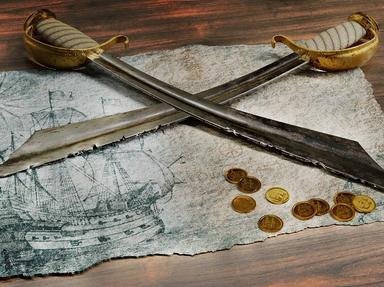
The Golden Age of Piracy Trivia Quiz
Most people agree that the golden age of piracy was between 1650 and 1730, and the buccaneering period was approximately 1650 to 1680. To what extent are you familiar with the lives of these pirates?
This is a renovated/adopted version of an old quiz by author MusicalKarissa
A multiple-choice quiz
by Lord_Digby.
Estimated time: 2 mins.
- Home
- »
- Quizzes
- »
- People Trivia
- »
- Other People
- »
- Pirates